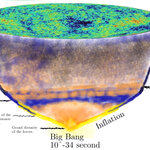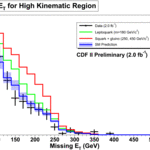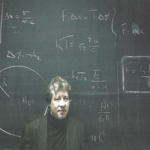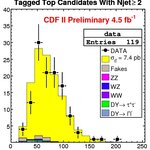Physics

Today mankind has a pretty good understanding of what physical processes followed the big bang, and lead to the universe we see today. This understanding is based on the solid foundation of direct observations of the first light to travel through a transparent universe. We also have data gathered by experiments in nuclear and particle physics labs on Earth. From these pieces of data a picture can be drawn of how the universe evolved in the first half million years of existence.
Traditionally this story is told in chronological order, starting with the big bang. However…

Three days ago I wrote a blog about a new theory that seems to lead to the conclusion that gravity is an effect emerging from quantum mechanical principles. The blog was inspired by an interview with string theorist Erik Verlinde published two days earlier in a Dutch newspaper. This newspaper article contained little technical details, and as at the time Verlinde hadn't published anything yet, my sole source of information were some equations vaguely visible on a blackboard in the background of a picture showing Verlinde.
Fortunately, the idea is fairly straightforward, and not so difficult…

The signature of large missing energy and jets is arguably one of the most important avenues for the study of potential new physics signatures at today's hadron colliders.
The above concept marks an interesting turn of events: the years of the glorification of charged leptons as the single most important tools for the discovery of rare production processes appears behind us. The W and Z discovery in 1983 by UA1 at CERN, or the top quark discovery by CDF and DZERO in 1995 at Fermilab, would have been impossible without the precise and clean detection of electrons and muons. However, with time…

Holographic Hot HorizonsWe are all familiar with gravity. Gravity is what makes us earthbound. It causes ourselves and any object in our vicinity to accelerate downward at 9.8 m/s2. Newton has shown that this holds true in a much more general sense: gravity is the acceleration field associated with any massive body. This gravitational acceleration is attractive, proportional to the mass of the body, and inversely proportional to the square of the distance to the body. Via this universal acceleration, gravity determines the celestial dynamics, it shapes galaxies and determines the ultimate…
Tomorrow I will be packing up and leaving CERN to fly back home, after a quite eventful, productive, extenuating, exhilarating week. The reason for my coming to Geneva was the CMS week, an event that takes place four times a year, and where a good fraction of the members of our 2400-strong collaboration gather to listen to updates of the experiment, the detector, the analyses, and to discuss rules, appointments, organizational issues.
This time, though, there was quite something more to do here for me. Most of my students had also come to CERN, as well as some of the collaborators who work…

Ok, now it is public, so I can also broadcast it: LHC last night got the two proton beams to collide at 2.36 TeV total center of mass energy. You can see a few event displays here:
http://atlas.web.cern.ch/Atlas/public/EVTDISPLAY/events.html (from ATLAS),
http://lhcb-public.web.cern.ch/lhcb-public/en/Collaboration/LHCbEvDis.html (from LHCB).
I am still waiting for some public info from CMS... Stay posted for more colorful event displays!

Well, as you know I cannot say anything about internal matters of the CMS experiment at the LHC, but I know that other sites will have information pretty soon on the matter. So my advice for tonight is to browse the web, and possibly the site of less discreet bloggers than myself. The CERN twitter feed might also be a good idea... All I can say is that LHC is working like a charm these days!

One of the cool things I have learned to do, through years of experience in data analysis at particle colliders, is to visualize the complex kinematics of a signal process in a multi-dimensional space, and imagine ways to separate it from backgrounds by selecting in the hyperspace the signal-rich region. I came across a very simple example of the above rather abstract statement yesterday, and I wish to share it with you.
To help you visualize what I am going to discuss, here is the example: an avocado in a square tumbler. The avocado is top pair production, and the glass is Z plus b-antib…
The verdict is out: Amanda Knox and Raffaele Sollecito killed Meredith Kercher.
The murder of the young British student in Perugia two years ago was a highly disputed case, and the proof of guilt of the two young lovers -a US citizen studying in Perugia and her boyfriend- appears largely based on indicia, and not on the more solid ground one usually expects for a conviction in similar instances.
The knife that killed Meredith was indeed found in Raffaele Sollecito's house, and there is indeed DNA from both Amanda and the victim on it; there also is DNA of Sollecito on Meredith's bra. There…

I do not know about you, but top quarks fascinate me. Since my early years as a student in particle physics I participated in the top search, and then the top discovery, with the CDF experiment at the Tevatron collider; and I then worked for many more years with top quark samples. And that particle is fascinating for many different reasons: its phenomenology, the richness of its decays, its mass close to the scale of electroweak symmetry breaking.
I feel honored by having had a chance to study the first few tens of top quark events that physicists have been able to produce, and yet I regret…